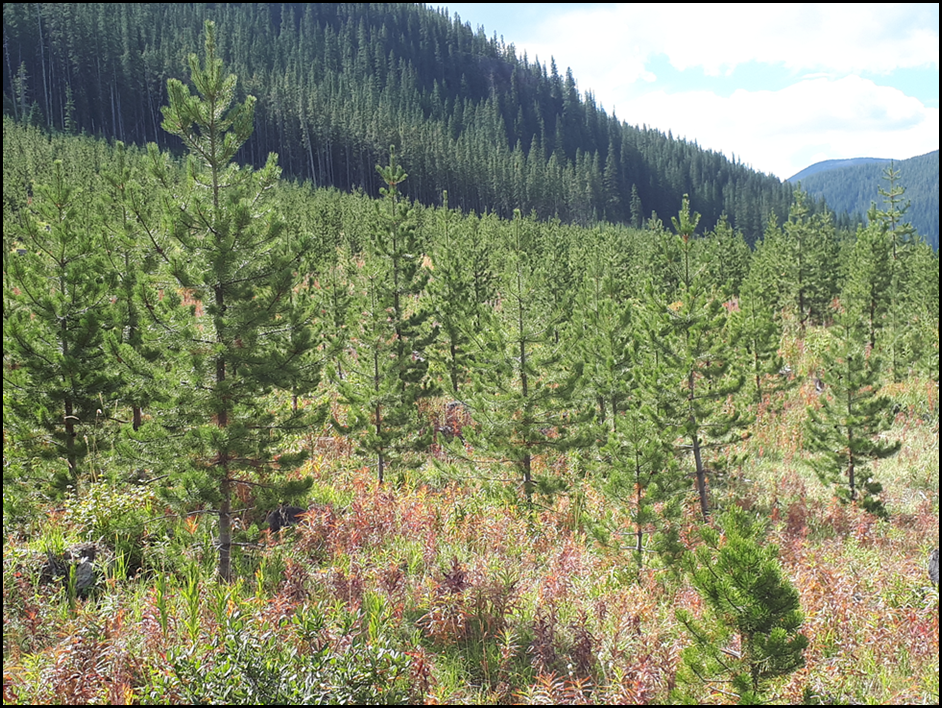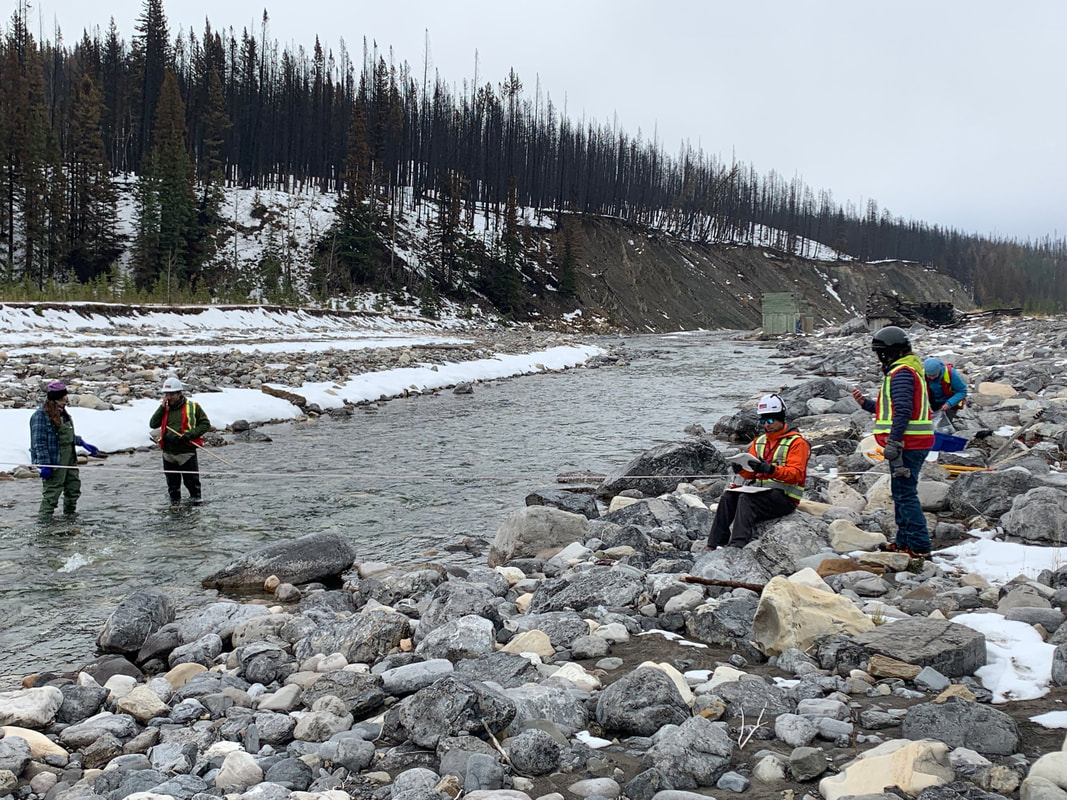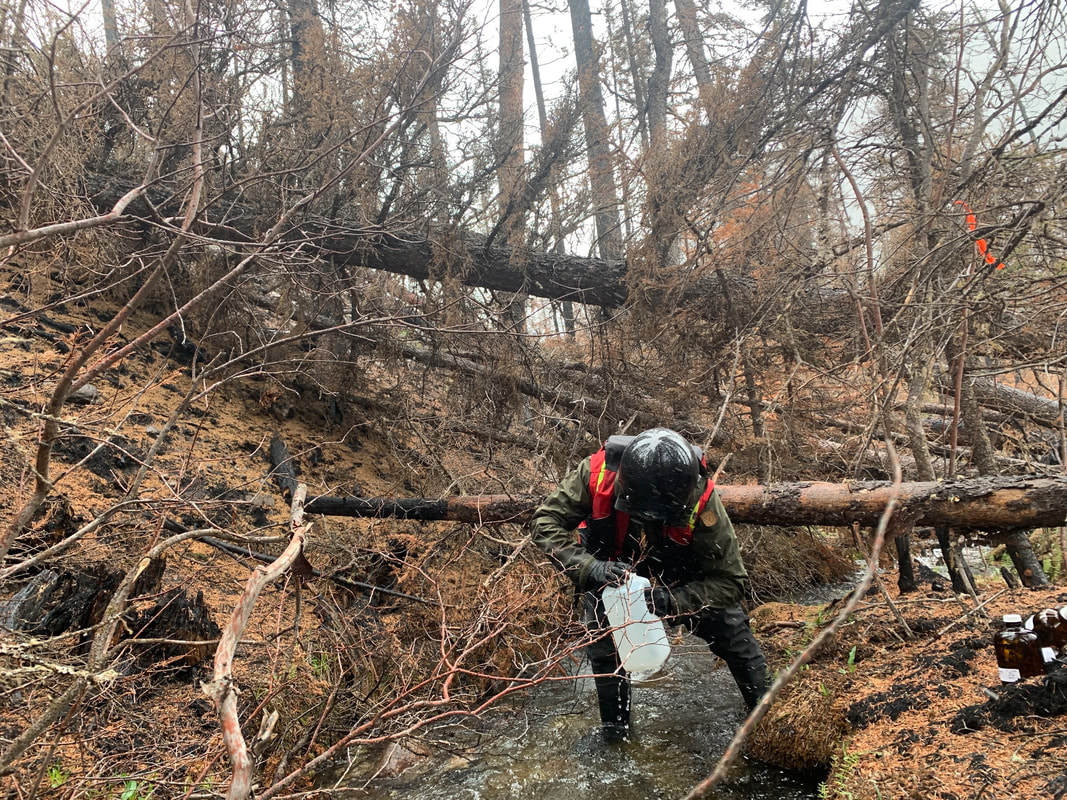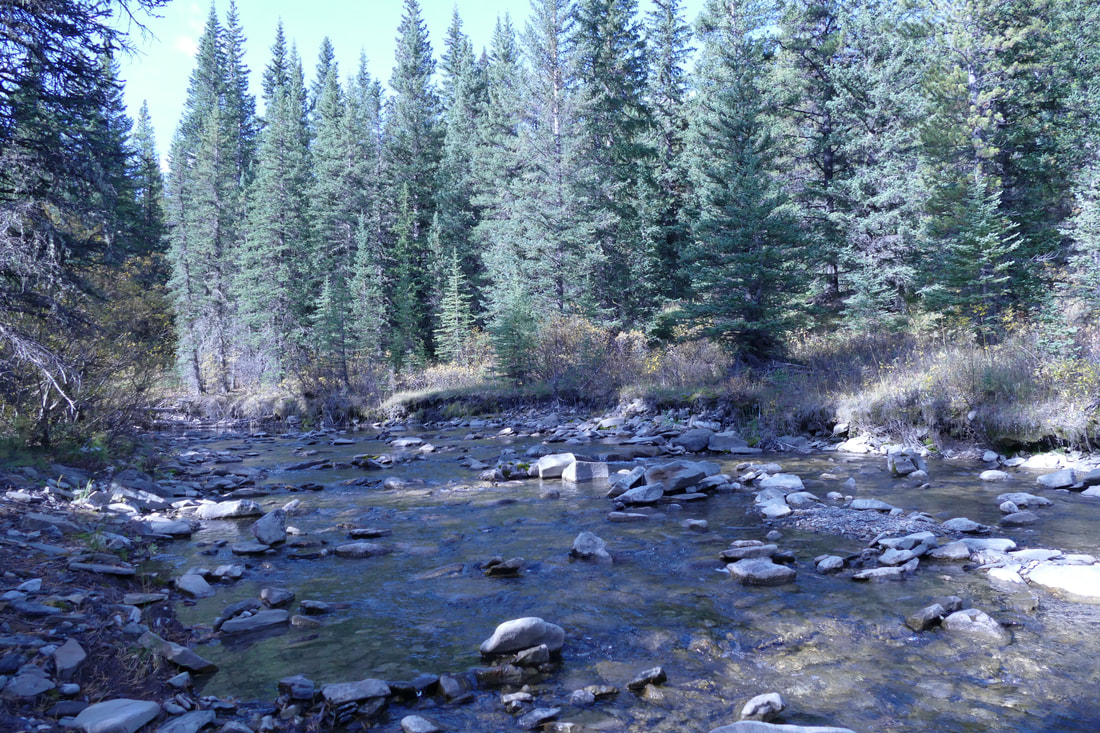|
By Elanor Waslander, Knowledge Mobilization Manager, the forWater Network Highlights
Approximately 70% of the world’s drinking water originates in forested watersheds. In Canada, forested watersheds generally produce high quality source water that requires less treatment and lower associated cost relative to water treatment systems sourcing more deteriorated source water. In recent decades, the increase of large, extreme wildfires as well as other landscape disturbances such as extreme precipitation and pest infestations in forests, has threatened the reliable delivery of high quality source water from forested watersheds. The forWater Network, a University of Waterloo and University of Alberta co-led network, was formed to address the growing need for tangible solutions to manage and reduce risk to source water quality resulting from landscape disturbances. The evaluation of forest harvesting impacts on source water quality and treatability has been a specific focus of forWater. The network, headed by Drs. Monica Emelko and Uldis Silins from the Universities of Waterloo and Alberta, respectively, bridges two very distinct research areas: water treatment and forest management. The City of Calgary and Spray Lake Sawmills (SLS) are forWater Network partners. Through the years of forWater participation, they have developed a unique partnership that led to the City of Calgary’s participation in the consultation process for SLS’s Forest Management Plan (FMP). This led to the collaborative development and inclusion of two voluntary goals within the FMP, one focused on water quality and another related to harvesting strategies to reduce the risk of wildfire. Jason Mogilefsky, Forest Manager at SLS, is one of the staff that oversees the FMP process. “Water quantity and quality values were currently addressed in the FMP but not particular to municipal drinking water. The City of Calgary, to their credit, saw some gaps in the plan that were related to protecting municipal drinking water supplies.” In addition, Mogilefsky noted the forWater Network as a key driver for addressing drinking water values in the FMP. “The scientific information provided by the forWater Network highlighted how relevant properly managed forests are in protecting drinking water supplies. We asked the City of Calgary to develop the drinking water VOITs themselves and then reviewed them, knowing that they have the expertise with water quality sampling,” said Mogilefsky. The process for creating FMPs is set into Canadian law. The province has a set of Values, Objectives, Indicators and Targets (VOITs) that inform and direct the implementation of all major strategies contained in FMPs. They include specific environmental performance targets a forestry company needs to monitor throughout plan implementation. The broad process starts with the Canadian Council of Forest Ministers (CCFM) who set the broad goals of the FMP process. From there, VOITs are created in each province. Very rarely, do forestry companies add additional VOITs and currently there are no VOITs that solely focus on drinking water source quality. In Alberta, there are 34 criteria for VOITs that are mandatory alongside a public consultation process. SLS, through their partnership with the City of Calgary, saw an opportunity to get ahead of the curve. The first VOIT focuses on water quality and the second on harvesting in areas of high wildfire risk to reduce potential impacts to water quality. The significance for each is that more data will be available for researchers and policy makers to better understand the impacts of forest harvesting on water quality and the challenges it can cause for water treatment. As the forested watersheds, where the majority of Canadians get their drinking water, become more vulnerable to high severity wildfire, more needs to be understood on the impacts of this change and to avoid “hot spots” that could impact drinking water downstream. Michael Wagner, Forest Hydrologist with the Forestry Division, Government of Alberta, shares the significance of this inclusion. “The inclusion of two VOITs focused on water quality is an improvement because it specifically identifies a value that needs to be managed strategically to enable it to be achieved. If we don’t have that in the forefront of our mind, we won’t know how that has changed through forest management.” the Spray Lake Sawmills’ proactive approach allows the industry and government regulations to shift towards more comprehensive protection of source waters for drinking water. This not only improves water security, but sends a clear message that more can be done to protect these limited resources. Jen Pouliotte, a Senior Watershed Planner at the City of Calgary, shares: “Spray Lake Sawmills was genuinely interested in seeing what the City of Calgary could come up with. What we developed, which was included in the plan, opened the door for a different discussion with regards to water quality as no one had included these measures before in all of Alberta.” The next step for this ongoing partnership is to determine how to monitor and evaluate the new drinking water quality VOITs. The City of Calgary shared that it is still early days in determining if the VOITs will have an impact on water quality and treatability in the future, but it is an important first step. Expanding the role forest management can play in protecting downstream water quality is one way communities can increase resilience to a changing climate. Managing the nutrients and organic matter that enter waterways that are the source for drinking water for major municipalities such as the City of Calgary might be a useful model for other places in the province and more broadly in Canada. As this partnership and resulting VOITs evolves, it has the potential to provide a jumping off point for other municipalities as they map out their resiliency plans for safe secure drinking water in the future. Please use the following links for more information:
1 Comment
Hi, Hope this message finds you well, Consort logistics Inc. working as a brokerage company and new in this market. But we are here to build Goodwill of consort logistics and Relations with companies in the US and Canada. We have been working as brokers for the last 3 months but as a dispatcher we are here for the last 15 years and providing dispatching and other trucking related services to many carriers. From your side we are looking to get some of your product shipments to move. We have carriers all over the USA & CANADA. We can assure you our shipping rates will be less from the market which can reduce your shipping cost. Please ignore the time we spent in this market as a brokerage but we have much experience to satisfy our partner companies. Hope we will get a good response from your company. Thanks looking forward to Adam Addy.
Reply
Leave a Reply. |
forWater NetworkThe Network provides insights into new scientific research for safe, secure drinking water---globally---which starts with resilient forests Archives
October 2023
Categories |





 RSS Feed
RSS Feed

